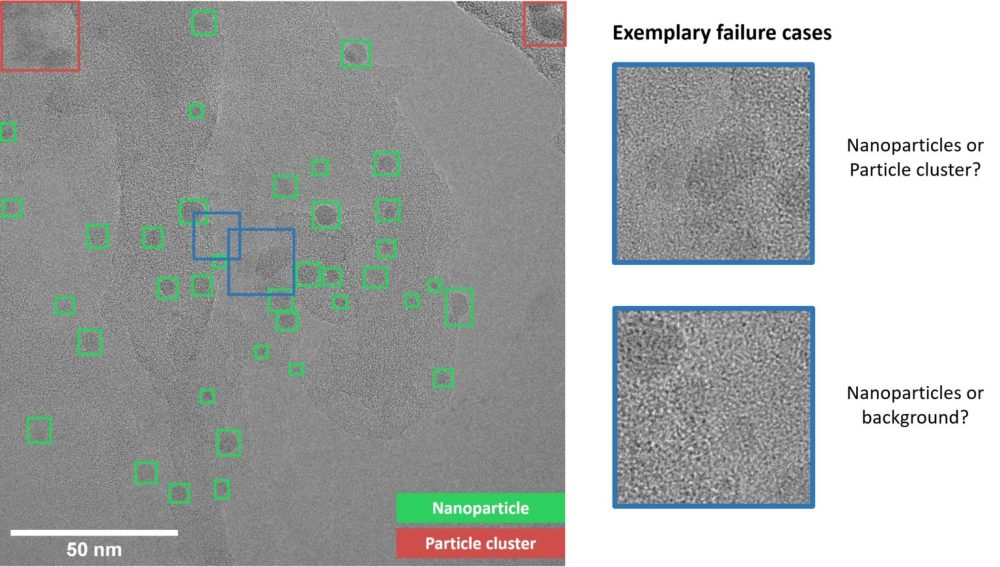Can you help spot nanoparticles?
Our Artificial Intelligence team, alongside researchers from Diamond Light Source and University of Oxford, need your help!
The team are looking to better understand the properties of nanoparticles catalysts. Nanoparticles are very small particles, which range between 1 – 100 nm (nanometres are 1/1,000,000,000 of a metre). Nanoparticle catalysts have a whole range of applications from manufacturing of medicines to water purification to production of agrochemicals.
Dr Michele Darrow, a Franklin scientist and part of the project said, “Despite their widespread usage there are some basic aspects of nanoparticle catalysts that we don’t understand. By understanding these basics we might be able to make these catalysts much more efficient and environmentally friendly.”
The scientists hope that by collecting basic information about the number of individual nanoparticles, their sizes, and how many of them are part of clusters, they will better understand these nanoparticle catalysts.
To help understand these particles better, they have taken thousands of images using a Scanning Transmission Electron Microscope (STEM). These images now need to be classified – there are too many images for any one scientist or even a team of scientists to go through, so they have used artificial intelligence to find and categorise the nanoparticles. Whilst this approach has been able to classify most of the particles correctly, however, it has struggled with some things (blue boxes).

This is where we need your help – it is important to measure the properties of the particles as accurately as possible so that we can better understand how they work.
Find out more about this project including how to take part here.
